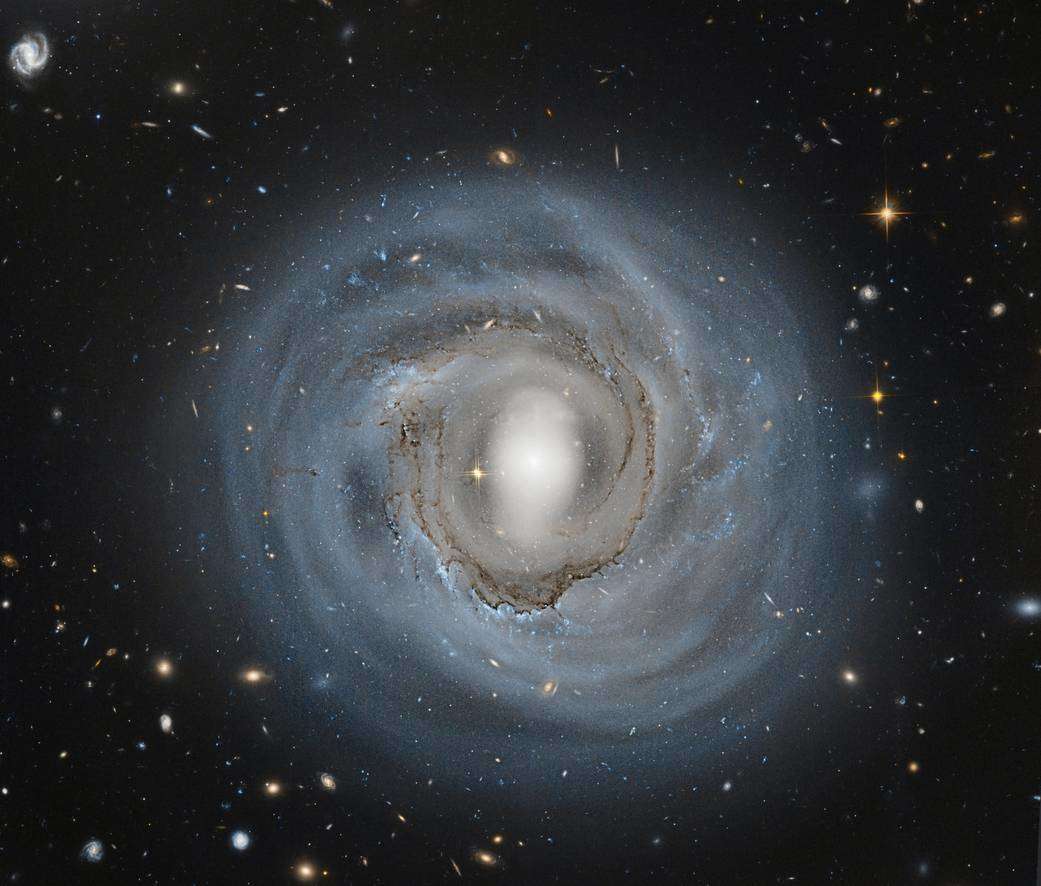Undead galaxies are now showing us how they zombify

Most things that die on Earth stay dead. The same can’t always be said about objects in space. When a galaxy is on its last breaths, it is hardly forming any stars (if any) anymore. Sometimes just one part will go quiescent, which is what happened with galaxy NGC 4921.
After star-forming gas was scattered into the interstellar medium, the the living part of the galaxy was left with two “necrotic” regions that no longer produced stars. Then something almost paranormal happened. That gas floated back to the live area and forming stars again — almost like reanimation.
NGC 4921 (above) has shown scientists that when gases are lost because of a process known as ram pressure stripping, dying galaxies can still rise from the proverbial grave when gas makes it back to the source galaxy. Astronomer William Cramer of Arizona State University found this out through Hubble and ALMA data. Zombie gas also slows down the process of galactic death, creating structures that are more resistant to forces trying to obliterate them.
“Hubble is an optical telescope, and allows us to see whether clouds are in front of or behind the galaxy based on ‘extinction’,” he told SYFY WIRE. “ALMA is a radio telescope, which allows us to measure the velocity of clouds to see if they're moving towards us or away from us, and thus we can see if they're falling back or being pushed out.”
Cramer, who led a study recently published in Astrophysics of Galaxies, was looking to see if clouds were blocking out starlight from NGC 4921. “Extinction” means that clouds in front of the galaxy are in the way of starlight getting through, but when these clouds are behind the galaxy, the allow for light to show itself. ALMA observations proved that there were clouds behind the galaxy which were not blocking starlight. Because ALMA uses radio waves to get a sense of what is going on, Cramer and his research team were searching for carbon monoxide (CO) and looking for the frequency of the CO line.
The CO line frequency in NGC 4921 was changing with its velocity. Its shift in frequency allowed the team to make out which direction clouds were going in, and how fast they were moving. As a galaxy moves around, gas within its cluster of galaxies moves like wind. Ram pressure stripping happens when this wind can defy the galaxy’s gravitational power and tear away gas from it. This phenomenon is usually detected when all material accelerates away from the observer.
Some clouds were moving back towards the observers, which gave away that they were falling right back into the galaxy. These clouds are thought to not be able to achieve the escape velocity needed to run out into the wild, which many be why they fall back in and bring the galaxy back to life.
“We think stripped gas is cooling and condensing, becoming dense enough that ram pressure is no longer strong enough to push some clouds out of the galaxy,” said Cramer. “This is the same cooling and condensing process that forms stars from stripped material in so-called ‘jellyfish galaxies’ like ESO 137 001.”
Astronomers can tell when ram pressure stripping has been going on in galaxies. This is just the first time they’ve witnessed its reversal. Usually, when the process pushes gas out permanently, it leaves behind evidence as it did with another Hubble observation, galaxy NGC 4402. The galactic disc will appear bowed because the strength of the stripping wind makes galaxy unable to hold on to looser dust and gas in its outer regions. Its dust and gas are taken far enough that the star-forming disc appears to extend beyond the galaxy’s edges.
The final deathblow for a galaxy suffering from ram pressure stripping is when trails of dust and gas are seen behind it. This material warps the view of remaining stars, making them appear red from behind. It explains why scientists sometimes call objects like NGC 4402 “dead red” galaxies. Whatever dust and gas was supposed to be ahead of the galaxy is also pushed back in the galaxy. This is not the same as zombification. Galaxies that have been stripped are left only traces of cold gas, meaning stars can no longer form. Carbon monoxide helped Cramer determine how much gas was left.
“Most molecular gas in the universe is in the form of hydrogen (H2),” he said. “Molecular hydrogen however is very hard to observe directly because it is very cold and doesn't emit very strongly in the radio frequency. CO is a particularly strong emitter in the radio part of the spectrum. Estimating the ratio of these other molecules to H2 determines the total amount of molecular gas in a cloud.”
After observing just one quadrant of NGC 4921, Cramer suspects that there is more reanimation going on in other areas. He is now proposing more thorough observations with ALMA that will determine the total amount of gas being necromanced and how soon the galaxy will ultimately meet its end.





























